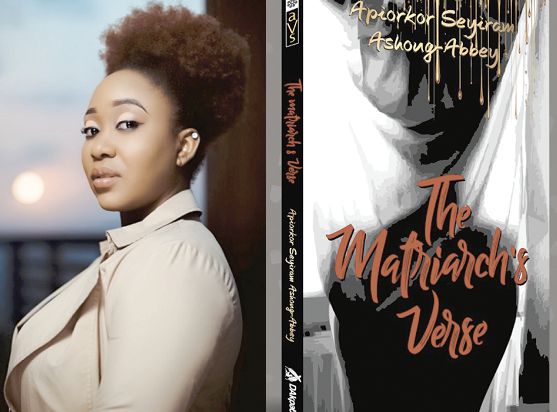Sometime, somewhere – between the past and the present – between drama and song – have been strewn petals of folklore waiting to be resurrected and fresh life pumped into them.
Sankofa, as we say in Akan, supports re-visiting one’s cultural heritage and sifting through the rummage to retrieve all that is useful and noble.
Magic of literary artistry
No doubt, two women that consistently stood out in the annals of Ghanaian literary culture have been Efua Sutherland and Ama Ata Aidoo. In their works, they used the genres of drama and oral folk art to depict the Ghanaian experience.
Artists tend to provide multi-dimensional galleries as the media for enhancing our daily perceptions of life.
Through the force of literary artistry, for instance, a lens is focused on our motives to expand our appreciation of one’s experiences. Artists tend to make it their business to explore inuring materials to alert us about the ways in which the world around us was shaped and reshaped.
If we pay attention, we see that writers, for example, cast illuming rays of light that stretch as far as the eye can see. In a way, they help the discerning mind to connect the dots looking backwards.
Efua Sutherland
In her foreword to “The Marriage of Anansewa”, Efua Sutherland wrote that she used a stock character, Ananse, as “a kind of Everyman, artistically exaggerated and distorted to serve society as a medium for self-examination.”
Ananse — presented as the pervading character behind our motives — was “made to mirror in his behaviour, fundamental human passions, ambitions and follies as revealed in contemporary situations.”
In her iconic play, “The Marriage of Anansewa”, the Ananse character is entangled in webs of deceit as he attempts to lure a daughter into a marriage of convenience for himself, as depicted in this dialogue:
“Anansewa: As for some old chief with fifty wives, that won’t do at all.
Ananse (with cunning): Supposing it isn’t some old chief but the finely built, glowing black, large-eyed handsome as anything, courageous and famous Chief-Who-Is-Chief?”
In the end, Ananse’s cruel scheme to get rich quick backfires, and the only way out was for his daughter to perish.
Ama Ata Aidoo
In turn, Aidoo presents a taste of modern marriage in the face of tradition. In a resistant posture, a bride rooted in western tradition — by the name of Eulalie — rebels against the demands of the African culture she had married into.
She wails at her African husband: “Eulalie, my people say is it not good for a woman to take alcohol. Eulalie, my people say they are not pleased to see you smoke … Eulalie, my people … My people … Who married me, you or your goddam people?”
Aidoo’s “The Dilemma of a Ghost” is now a classic piece of drama listed for study in a Cambridge IGCSE course – Literature in English.
In the foreword to a Festschrift to celebrate Aidoo’s 70th birthday, Margaret Busby — a noted Ghanaian publisher in the U.K. — quoted the following words by her: “only a woman knows what it is to be a woman and can give expression to the essence of being a woman.”
The new woman on the block
In Apiorkor’s “The Matriarch’s Verse”, the matriarch symbolises the all-knowing, empathetic woman. The book’s cover displays the silhouette of a curvaceous, voluptuous motherly woman behind a light curtain. Her hands are raised, and her head is not visible. The woman and her surroundings are in black, with subtle shades of grey.
For Apiorkor, the blackness in the silhouette sports the elements of power, fear, mystery, strength, authority, elegance, formality, death, evil, aggression, authority, rebellion, and sophistication. As she notes, for all other colours to have variations of depth and hue, black is required, and the elements symbolise the true essence of “The Matriarch’s Verse”.
The matriarch figure is as close as she is distant; and though she is clearly invisible, her presence cannot be missed.
For the author, the portrait bears the sensuality and bold femininity that defines the book. She believes it captures the mystery lurking behind life’s curtains.
Humble, courageous, sensitive and shadowy – the matriarch is a keen observer of the lives entangled in the bobbing and weaving world. A window to one’s soul, she voices out the human story through the eyes of those without voices.
Woman to woman
The fire in Apiorkor’s belly is devoted to every woman who feels lost, troubled and drowned in the deep waters of social expectations and womanhood. In a verse, the new author quipped:
“To you [who slay everyday] I say that your existence needs not depend on a fleet of men sailing in and out of your delicate waters, but never docking at your harbour.”
The verses are fashioned for “all the women, who have lost hope and have begun to feel they tread the path of this treacherous world alone, To You, I say you have a bleeding sister in me.”
Apiorkor was a pioneer head prefect at Tema International School (TIS) and majored in English at the University of Ghana, Legon. Today, she designs content and produces shows on Accra-based Citi 97.3 FM and Citi TV.
The new author is most welcome to this bourne from which no true artist quits. Her maiden book will be launched at the Alisa Hotel, Accra, Friday,October 4, 2019. Yours truly has been captured – avec plaisir – to review the verses at the launch.
Email: anishaffar@gmail.cpm
Website: www.anishaffar.com
The author is a trainer of teachers, a leadership coach, a motivational speaker and quality education advocate.
Email: anishaffar@gmail.com
Blog: www.anishaffar.org

